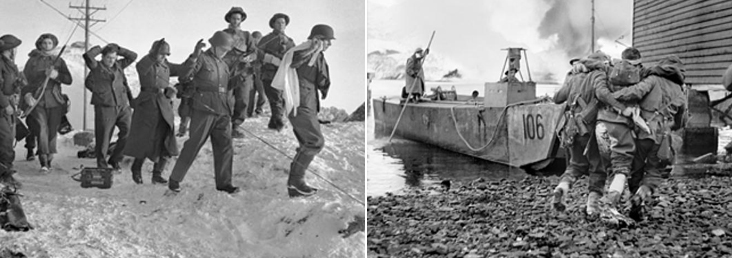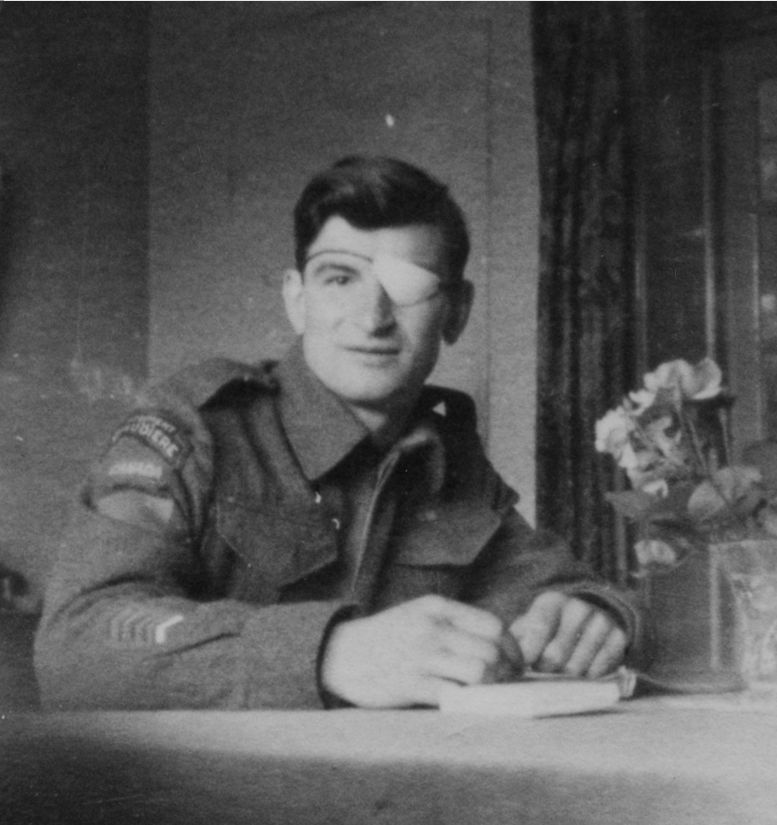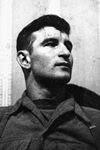I Was There! - We Went to Vaagso with the Commando Men
The War Illustrated, Volume 5, No. 118, Page 430-431, January 20, 1942.
On December 27, 1941, for the first time British soldiers, sailors and airmen combined in an assault on the Nazi-occupied European coastline. Their raid on the Norwegian island of Vaagso is here described by Reuter's correspondents who accompanied the expedition.
We left our base with Christmas decorations still hanging up in the wardroom, and early on the morning of December 27 were off the entrance to Vaagso Fjord waiting for dawn – the zero hour for the attack to begin.
The ship's crews had been closed up at their action stations for an hour or more and there was not a sound as, in line ahead, we gently slipped round the headland and steamed down the fjord towards the town. Everything was ready for the first step – the bombardment of the two coastal batteries which the warships had to carry out first to enable the soldiers to make a safe landing.
Once inside the fjord assault craft with soldiers veered out of line and the warships went ahead to take up their positions. No attempt was made to interfere with this, and it seems that the first knowledge the German gunners had of our arrival was a hail of high explosive shells which rained relentlessly down upon them, reducing their gun emplacements to piles of shattered masonry and their guns to twisted pieces of metal. Only one gun of the two batteries answered our fire, and this was immediately silenced by our accurate shooting.
Beneath this cannonade a thin snakelike line of Commando barges drove straight to the islet, and within half an hour the men in them had climbed its rocky slopes, stormed the guns as in days of cutlass and pistol, shot many Germans and taken 20 prisoners. Later the gun emplacements and stores were blown sky high. Simultaneously with this assault, led by a major who serenaded his men across the smooth water to the strains of his bagpipes, the main landing – which I made in the leading barge with members of the Army film unit – took place.
As the naval bombardment died down the Hampdens swept over the head of the tiny bay in which Vaagso Port lay nestled thickly against the towering cliffs.
The Commandos chose a rocky foreshore on which to lower their ramps, and as they landed smoke bombs dropped from 50 feet up. This screen, through which a German machine-gun fired a few rounds ineffectually, gave the landing-party complete cover. It was perhaps a little too close, but it could not have been better timed. The R.A.F. had scored an early bull's eye.
I waded ashore with the rest, knee-deep through rocky pools and acrid fumes, on to ledges of snow. It was a weird and confusing experience, through which the Commando troops, led by dashing young officers and hard-bitten sergeants, emerged to begin a series of assaults through and around the narrow town from west to east.
It was then that the fun – Commando fun 1942 style – really started. The officers of the troops concerned gathered up their forces for the most desperate of all the tasks that short swift day. They had to advance down the main street.
A Troop Without An Officer
One officer had slipped on getting out of the boat and jammed his leg between it and the rocks, but he struggled on, limping badly. Another encountered immediate machine-gun fire, and with his men engaged and killed five of the enemy before setting fire to an ammunition dump. Later, he was killed trying with a corporal to storm a hotel from which a number of German officers were firing. A third officer was sniped in the back soon afterwards. At one time the entire troop was without an officer in command.
Despite casualties, all ranks pursued their task with great gallantry both before and after they were reinforced by a floating reserve. One man I saw fought brilliantly. He was the corporal who went with his captain to storm the hotel. After the officer had been shot he managed to chuck a grenade into the building, which then caught fire.
Many Germans were roasted to death in houses they made into strong points, and from which they doggedly refused to emerge, even when grenades or a fusillade of shots had set the rooms about them on fire. Resistance was particularly stubborn in the centre of town which, as the morning grew older, began to blaze as more and more houses holding snipers and small parties of the enemy came under heavy fire, including 2-inch and 3-inch mortar shells.
While we were still dodging behind boulders and slinking over the first half-mile, and whilst the first of the Norwegian men, women and children, anxious to go to England, were running back to our barges – some in tears, some laughing and all rather scared – two warships rode majestically past the town sending a wash ashore for four miles or more of Nazi inland waterway space.
Heavy gunfire reverberated down the fjord to add to the clamour of explosions. Another German coastal battery four miles away over the hills tried to get the range of our warships, but their fire was ineffective.
Deprived of reinforcements, the nearest neighbouring garrison was over the water 25 miles away. The Germans got little help from their air force, although the aerodromes at Trondheim, Stavanger, Lista, Aalborg and Herdla are all within striking distance.
The land operations, carried out in the extreme confusion of close hand-to-hand fighting, smoke and flame, tested the Commandos' communication system to the hilt and as the battle progressed many messages could only be got through by word of mouth.
The lieut.-colonel commanding the battle on shore showed an inspiring disregard of danger in his anxiety to keep it under control. He escaped unscathed, although he had at least one narrow escape. A German opening a door threw a stick grenade in his path, but he jumped clear. Then the Nazi walked out. He was immediately shot.
 The remarkable photographs in this page were taken during the combined raid on the occupied islands of Vaagso and Maaloy on December 27, 1941. Left, four German prisoners, one of whom carries a white flag of surrender, being escorted to a British transport. Right, one of the few British wounded being evacuated on one of the landing craft. At least 120 Germans were killed during the raid. Photos, British Official.
The remarkable photographs in this page were taken during the combined raid on the occupied islands of Vaagso and Maaloy on December 27, 1941. Left, four German prisoners, one of whom carries a white flag of surrender, being escorted to a British transport. Right, one of the few British wounded being evacuated on one of the landing craft. At least 120 Germans were killed during the raid. Photos, British Official.
Demolition work was sometimes unavoidable risky owing to the closeness of the caning and oil factories to the fighting. I and several others had to duck rather hastily when the biggest of them was blown up, and a little later, when the only German tank in town, a small light model, was demolished in its garage. Pieces of the burning metal whistled past me up the street and wounded two of our men 200 yards away.
The Germans, though outnumbered, fought to the last and were good physical types. By skilful use of cover and by using almost flashless and smokeless cordite they showed that they have mastered one of the ugliest features of modern war – street-fighting. Some German troops, including a small unit spending Christmas at Vaagso and who were out early on a route march, made for high ground, and one soldier was still sniping when, all tasks completed, the last of the Commandos were re-embarked.
It was just three in the afternoon as we steamed out of Vaagso Fjord. Almost the entire German garrison of upwards of 200 men had been killed, wounded, or taken prisoner; all the industrial plant was dynamited, and the coastal guns spiked. The Navy destroyed 16,000 tons of merchant shipping, two armed trawlers and an armed tug. R.A.F. and Naval cooperation was of first-glass vigour, and, as one Commando sergeant described it, "so comforting". No soldier, sailor or airman who took part failed to realize their complete interdependence in modern warfare.
Previous and next article from I Was There!
I Was There! - On My Way to Kuibyshev from Moscow
As the Germans drew ever nearer to Moscow, those people of the city who were not required in the fighting line or the factories were evacuated to Kuibyshev, 450 miles away on the Volga. Among them was
I Was There! - With Unbelievable Suddenness the Barham Sank
Told by Capt. C. E. Morgan of the Valiant to Massy Anderson, Reuter's special correspondent, this dramatic story of H.M.S. Barham's sinking off Sollum on Nov. 25, 1941, has a tragic interest in that M
Index
Previous article
At Pearl Harbour Japan Tried for a 'K.O.'
First details of American losses in the Japanese attack on Pearl Harbour, Hawaii, on Dec. 7, were given by Col. Knox, U.S. Navy Secretary, on his return on Dec. 15 from a visit of investigation. The b
Next article
The Yellow Tidal Wave in the Far East
The capture of Kuala Lumpur and Tarakan, the Dutch island off the coast of Borneo, mark the second phase in the Japanese encirclement of Singapore. After five weeks of fighting the enemy held four-fif





